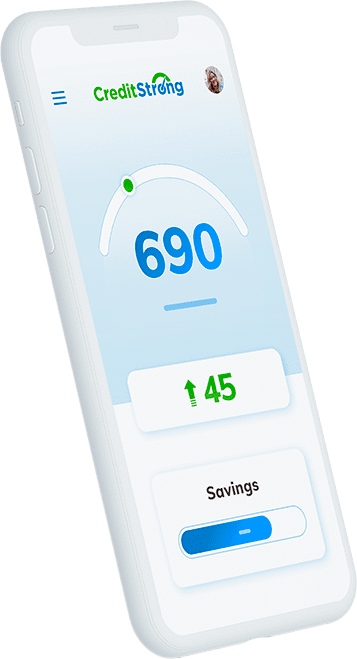How Long Does Bankruptcy Stay On Your Credit Report?

Build strong credit
while you save

It’s a personal finance catastrophe for some people. For others, it’s a blank slate. Making the decision to file for bankruptcy is far from easy. The trade-off for having your debt eliminated is a long-lasting derogatory mark on your credit report identifying you as a huge credit risk.
Your credit report sees the effects of a bankruptcy filing for ten years for a chapter 7 bankruptcy. With a chapter 13 bankruptcy, your credit is affected for seven years.
How Long Does A Chapter 13 Bankruptcy Stay On A Person’s Credit Report?
Bankruptcy is the last resort for people who have seriously delinquent accounts and overwhelming debt. It helps borrowers reorganize bad debts through a legal process played out in bankruptcy court. Depending on the situation, you might even need a bankruptcy attorney.
A chapter 13 bankruptcy stays on your credit for seven years from the filing date. This type of filing stops collection attempts with the goal of creating a plan to partially repay your debts. Some of your other debts might be eliminated during this process.
The debts you’ve agreed to repay are included in a repayment plan ranging from three to five years. Once you’ve fulfilled the payment plan, your debts could be eligible for discharge. The bankruptcy is still a public record, but the discharged debts may help boost your credit score.
How Long Does A Chapter 7 Bankruptcy Stay On A Person’s Credit Report?
Chapter 7 bankruptcy allows people with low income to liquidate their assets in an effort to repay debts they’d otherwise be unable to pay. This type of bankruptcy doesn’t have a repayment plan because most unsecured debts are eliminated by it.
While it does eliminate your debts, it comes with a bigger penalty. The downside is that a chapter seven bankruptcy stays on your credit for ten years.
This is because all the debts included in the bankruptcy discharge become bad debt for the creditors that were collecting on it.
If you have a debt that was reported delinquent before you filed for bankruptcy, it’ll fall off within seven years of the delinquency date.
Sidenote: You’ll still be responsible for student loans even in bankruptcy. There’s no discharging those debts.
How Does A Bankruptcy Impact Your Credit Score?
As long as a bankruptcy shows on your credit report, it will impact your ability to get approved for the forms of credit you need. The depth of that impact differs depending on a few factors:
- The type of bankruptcy
- How long ago the bankruptcy was filed
- What your credit score was before filing bankruptcy
- How much discharged debt was included in the filing
The length of time a bankruptcy stays on your credit report depends on whether you filed for a chapter 13 or a chapter 7 bankruptcy. Time penalties aside, credit bureaus often view chapter 13 more favorably because at least some of your debts are repaid.
As time passes, bankruptcy has less of an effect on your credit report. A fresh bankruptcy filing of a few months makes it almost impossible to get approved for anything.
Meanwhile, a bankruptcy case from six years ago will have less of an impact if you’ve done work to rebuild your credit.
The higher your credit score was before the bankruptcy proceedings, the bigger drop you’ll see in your credit score. For example, someone with a 780 credit score could see a drop of 200 to 240 points. Thus, bringing them down to a humble 580 to 540 credit score.
An average score of about 680 could hit a low of 530 to 550.
In most cases, someone who decides to file a chapter 7 bankruptcy has multiple delinquent accounts contributing to a bad credit score. Once the bankruptcy happens, those accounts are closed and removed from the credit report.
So, sometimes your score actually increases since only the bankruptcy shows on your credit report. According to Debt.org, people with credit scores in the 400 to 500 range typically see an increase of up to 50 points after filing.
Will My Credit Score Increase After Bankruptcy Falls Off?
After your seven or ten years are up, the credit reporting agencies automatically remove the bankruptcy filing from your credit report. That’s excellent news and it puts you on the path to building good credit. However, it doesn’t automatically mean your credit rating will increase.
When the bankruptcy is still on your credit history, the credit bureaus group you with borrowers who also have bankruptcies to assign you a credit score. Once it falls off, you’re moved into a grouping with borrowers without bankruptcies.
Oftentimes, people in this new grouping have built their credit history while you were waiting for the derogatory mark to be removed. When you’re placed in comparison to them, your score might not look as appealing if you haven’t found the opportunity to build credit again.
Outside of that instance, many people experience a boost to their credit score after a bankruptcy falls off. It requires some work to rebuild your credit while waiting out the clock. This looks like opening secured credit cards or rebuilding credit with other types of accounts.
Although it’s difficult to find a lender or credit card issuer that works with borrowers who have a bankruptcy, it’s still possible.
How Can You Reestablish Your Credit Score After A Bankruptcy?
To avoid getting yourself into more financial trouble, it’s important to change your money habits. This will look much different from what you did before. But with the right mindset and discipline around managing your finances, you’ll be able to bounce back.
If you start the process of rebuilding your credit from day one, experts have said that you can start to see your credit score increase after just two to three years. Though the bankruptcy is still on your account, the effect of it is much less.
The process of rebuilding credit takes time, but the steps to achieve it are simple. It starts with reviewing your credit for errors, making on-time payments, and lowering your credit utilization.
In many cases, a secured credit card or credit builder loan helps add positive payment history to your credit profile. The challenge is in finding a credit card company that accepts borrowers with a bankruptcy on their report.
Check Your Credit Report For Any Errors
To start rebuilding your credit, you’ll want to review your credit reports from each credit bureau. You can get a free credit report from each credit reporting agency from AnnualCreditReport.com.
It’s also helpful to use sites like Credit Karma and Credit Sesame for educational credit reports.
By pulling your TransUnion, Experian, and Equifax credit reports, you’ll identify any errors that might be affecting your credit score. Under the Fair Credit Reporting Act (FCRA) you have the right to dispute any errors on your credit report.
During the bankruptcy process, mix-ups are possible. While you’re looking over your credit reports, make sure the right accounts are reported as “discharged” or “included in bankruptcy”.
If you find any errors, the CFPB has an in-depth guide on how to dispute them. They also have a guide if you notice signs of identity theft.
Keep in mind that this doesn’t work to remove your bankruptcy before it’s scheduled to fall off. Your time is better spent finding ways to rebuild your credit instead.

Don’t Miss Payments
The most essential part of rebuilding credit is making all of your payments on time. This might be new territory if you’ve gone through bankruptcy. If you master this skill, it’ll help you build the foundation for earning good credit.
Late payments get reported to the credit bureaus and stay on your credit report for seven years. That’s the last thing you’d want after waiting to get your bankruptcy removed. When you open new credit or secured debt, be sure to stay on top of your payment due dates.
Build out a budget with the income you earn each month and designate the necessary funds to pay your monthly expenses. To help with this, set payment reminders or notifications so you know when each bill is due.
You might even use a budgeting app to stay on time with your payments.
Keep Your Credit Utilization Ratio Low
Your credit utilization makes up a significant chunk of your credit score. Keeping it low aids in building good credit. Your credit utilization ratio is how much of your available credit you’ve used.
If you have a credit card with a $10,000 credit limit, and you’ve spent $5,000, your credit utilization would be 50%. Credit experts typically suggest keeping your credit utilization ratio below 10%.
The best credit card practice is to pay off or pay down revolving debt each billing cycle. You could also request a credit limit increase. Just be careful not to overspend.
Overall, bankruptcy is a difficult issue to go through. The consequences for that decision come with years of being marked as a derogatory borrower and difficulty in qualifying for any form of credit. But it doesn’t last forever.
It might be hard, but you have the power to change your credit habits and rebuild after a setback. Put yourself in a position to stay on time with your payments, reduce your credit utilization, and dispute errors on your credit report.
CreditStrong helps improve your credit and can positively impact the factors that determine 90% of your FICO score.
